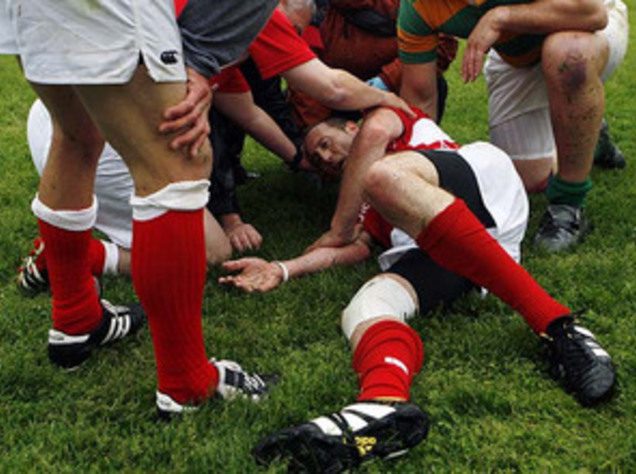If you are playing in a position such as a one of the centres (Players #12 and #13) or a full back (Player #15), it is your job to be the most defensive players in the game. In the sport of rugby, playing defensively is done by creating a barrier with your players to prevent the opposition from scoring. Not only must you stop the opposition from scoring tries, you must get the ball back!
Although the centres and the full back do the majority of the defense, a defensive line is made in a game with 6 players in the front line and 1 player behind sweeping. The person who is sweeping should not be standing too far behind the front line so that they can make sure they prevent the opposition from getting the ball over the first line of defense. In addition to this, they should be just far enough so that they can still verbally control the front line by arranging the players into open gaps. The sweeper should make sure that the front line is working in groups of threes, always aware what side and area they are covering. If the ball is passed by the opposition to one side, the team should drift to mark each player along the line as the ball is being passed around. It is important to keep in mind that in the sport of rugby , there are no off sides in sevens unless there is a tackle. Therefore, the defense is able to push up into the opposition line without leaving any gaps. It is at this time that players can make a tackle with the opposing player who has the ball, and attack the line to prevent any passing.
Get the Ball Back:
In order to be successful in getting the ball back from the opposition and keeping it, the first aim of defense is attacking. Attacking without the ball is based on dominating your opponent to regain possession and prevent having the attack pass the gain line. When you tackle, it is illegal to tackle any player besides the ball carrier at the time. For information on mastering a rugby tackle, check out CoachUp’s article on Rugby Tackling. After you occupy and defend the ground appropriate to your position on the field, decide what will happen to the ball if it is able to be recovered from the opposition. Make sure to cover player positions on the field. Once the ball is in your team’s possession, communicate and go forward.
Additional Defensive Tips:
- Keep your teams defense prepared to cover any weaknesses from another teammate
- Watch for gaps between yourself and other players where the opposition’s attackers would run.
- If you are outnumbered by the opposition, backpedal or fake tackle until you have adequate support.
- When you are near your own goal line, defensive play is most important.
- Stay on your toes!
The following list consists of the different types of defensive plays a rugby team can utilize in a scrum:
- Man-on-Man Defense
- Man-on-Man Isolation Defense
- Man-on-Man Overlap Defense
- Out-to-In Defense
- In-to-Out Defense
- Arrowhead Defense
- Defensive Organization in Phase Play
CoachUp is the safest and easiest way to find a private sports coach. With our 100% money-back guarantee and vetted coaches, anyone can achieve their full athletic potential. Find your perfect private coach today and become the athlete you want to be!
How useful was this post?
Click on a star to rate it!
Average rating 0 / 5. Vote count: 0
No votes so far! Be the first to rate this post.



